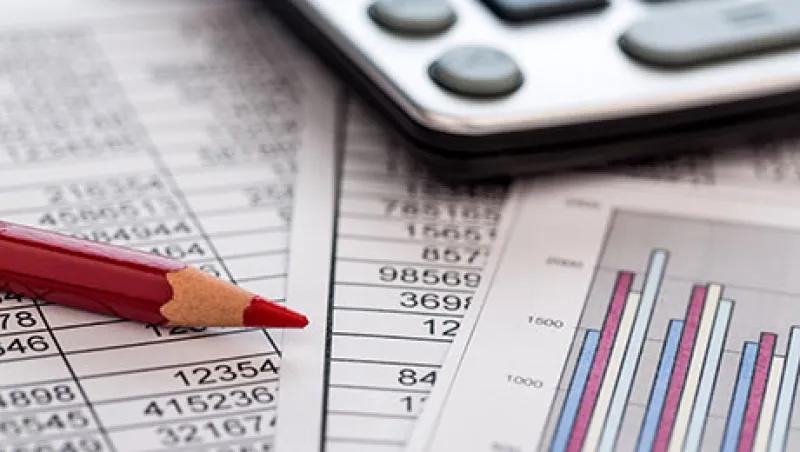Dividend investing is a perennial strategy for retirees. But with interest rates at historic lows, even going negative in some markets, investors of all stripes are looking to dividend stocks as a source of yield. Now that certain sectors of the economy are under pressure, however, some companies may find it difficult to keep making payouts. Although dividend investing still makes sense as part of an equities portfolio, investors will have to keep a closer eye on balance sheets than they might have during the recent equities rally, registered investment advisers counsel.
“I think the question is, If you’ve been doing dividend investing as a big part of your large-cap portfolio for the past five years, like everyone else has, is there really upside left in that trade?” says Steven Dudash, president of Chicago-based IHT Wealth Management, which oversees about $250 million in assets. Dudash, who is looking at real estate and other asset classes as market turbulence persists, points out that some dividend-paying energy master limited partnerships have turned out to be risky for investors during the current slump in oil and gas prices.
Jim Cahn, CIO of $4.5 billion, Plymouth, Minnesota–based Wealth Enhancement Group, agrees. In addition to the problem with MLPs, he observes, some dividend stocks that started offering dividends during the recent equities rally may not be able to maintain those payouts or raise them — as many dividend investors expect — if a bear market takes hold.
“There’s this folklore out there that investors should never touch their principal and only live off of dividends and interest,” Cahn says. “I think that would be a great thing, but it’s not always possible and can end up being much more risky if an investing strategy is based around that idea.”
Dividend investors often pick stocks based on a track record of consistently rising dividends; this tactic can pose challenges if a company needs to adjust its dividend policy because of business pressure or changing market conditions.
Take General Electric. This blue-chip name has consistently delivered a dividend, but recently the Fairfield, Connecticut–based conglomerate announced that it would be freezing any increases to its payout while it sells off the rest of its GE Capital business lines. Although the dividends will keep flowing, the freeze may hamper investment strategies based on annual hikes.
Vale, the world’s largest iron ore producer, recently proposed a dividend policy change that would take the Brazilian company off its current minimum-payout plan. From now on, Vale will pay a dividend only after it assesses its financial health each year. Like many of its peers in the iron ore businesses, Vale has struggled to find profitability during the commodities slump. The company posted a $12.13 billion loss for 2015, so management’s move toward focusing on financial health at the expense of a dividend makes sense, but it could scare off investors focused on such payouts.
Joseph Zappia, principal and co-CIO at LVW Advisors, is one of those investors who leave if a company freezes or cuts its dividend. “We think including dividend stocks is a foundational part of an equities strategy,” says Zappia, whose Pittsford, New York–based firm manages $2 billion in assets. “But we screen for those companies with a long history of paying, and we will also remove a dividend payer if they have gone more than four quarters without an increase.”
This approach limits Zappia’s dividend universe to a small group of mostly large-cap stocks that include some of the oldest publicly traded companies, such as Omaha, Nebraska–based Union Pacific Railroad and Orrville, Ohio–headquartered food manufacturer J.M. Smucker Co. There are a few small-cap stocks too, but they aren’t new, just niche. “With Smucker’s, for example, it is a small-cap stock, but they have been around for a long time, they have a strong balance sheet, and they increase each year,” Zappia says. As for railroads, he adds, the sector is durable and works as part of a defensive strategy, because companies are unlikely to change their dividend policies even if they see a dip in share price.
By concentrating on stalwarts, investors can tamp down the volatility of their stock portfolio and take the yield, Zappia says. “We aren’t interested in performance chasing,” he says. “These aren’t names that will see a big run-up and then drop back down.”
In a 2014 paper, Zappia went into greater detail about how dividend investing should work from his perspective. His research shows that if investors focus solely on price appreciation when evaluating equities, they may be disappointed in drawdowns, as occurred in 2015. Even without a significant correction, price appreciation may prove equally elusive for investors during a bear market. Thus dividend payers have a leg up on a total return basis. Indeed, data from Norwalk, Connecticut–based FactSet Research Systems included in the LVW paper show that dividends can account for as much as 40 percent of stock market return. Still, for investors to make the most of this boost, they must do solid research.
For anyone considering a dividend strategy, the key is to focus on balance-sheet strength, says Ross Gerber, CEO of Santa Monica, California–based Gerber Kawasaki Wealth and Investment Management, whose assets total about $400 million. “Whether or not a company pays a dividend should really be the last thing you look at,” Gerber asserts. “If the company has a good balance sheet, then you start looking at the dividend and how they pay it.”
Gerber cites companies like Apple and the Walt Disney Co. as good examples of dividend payers in this market. Apple hasn’t been paying a dividend as long as some other large-cap names, but advisers expect that its payout will continue to increase, given the company’s large cash reserves. In the latest equities rally, some investors may have been caught up in performance chasing, he notes, but that strategy will be tested in choppy markets.
“Disney and Apple have a lot of cash on hand, they have an understandable business model, and I trust the management to make good decisions,” Gerber contends. “They would be great companies without the dividend.” Investors have to be disciplined in securities selection and understand what a prospective company does and who runs it, he adds: “Just chasing dividends isn’t the whole picture.”






